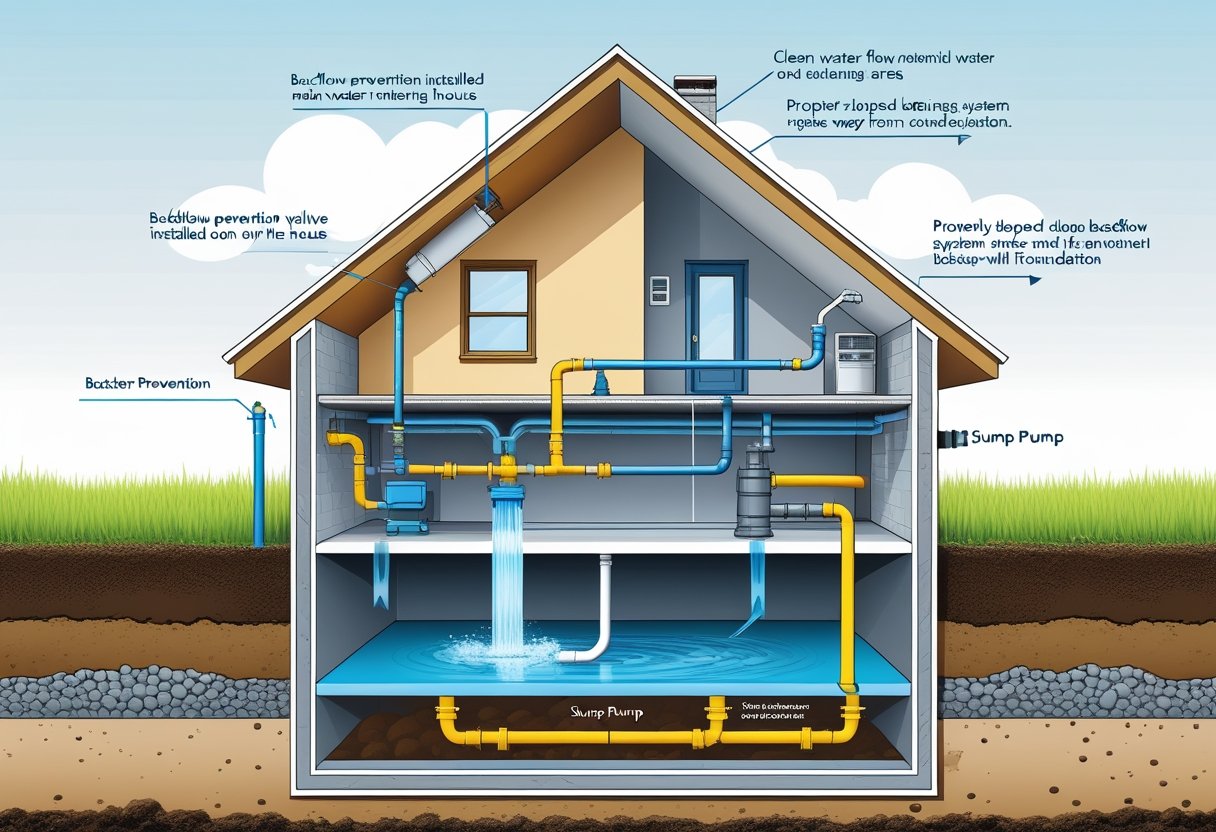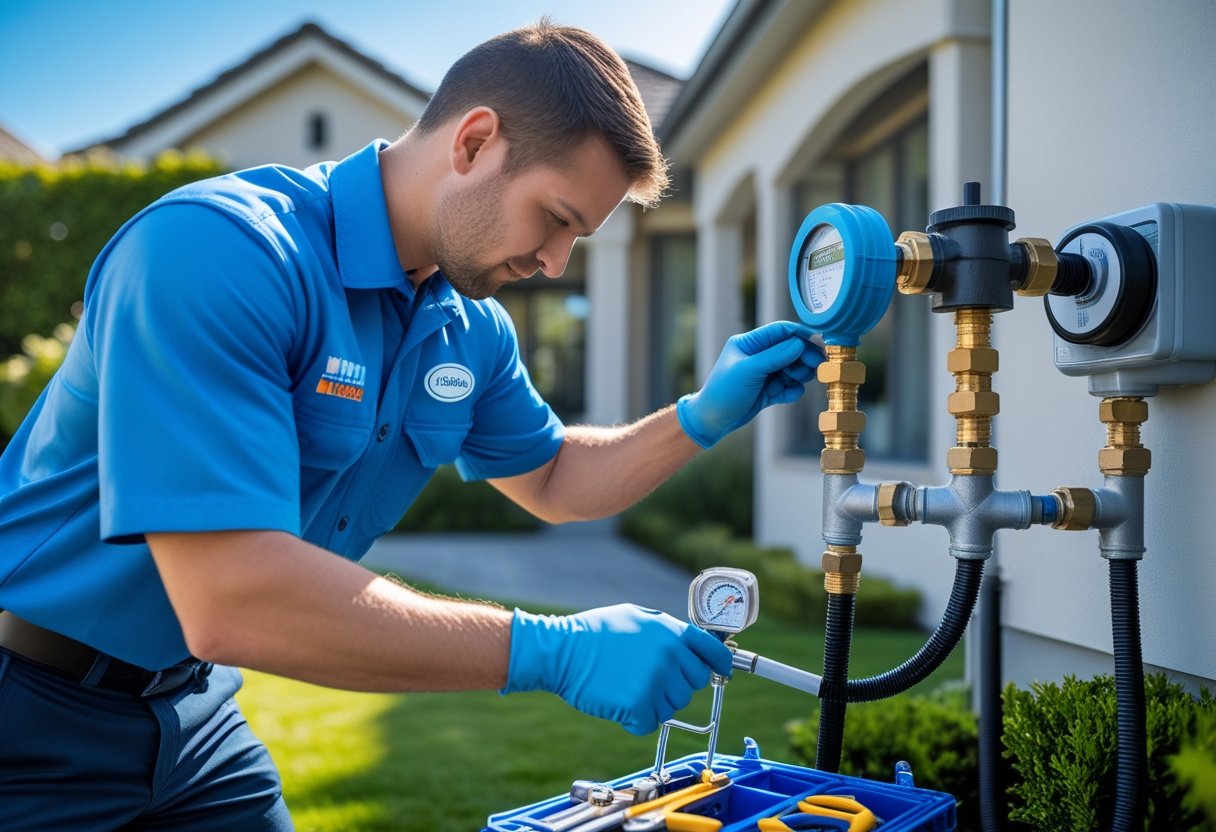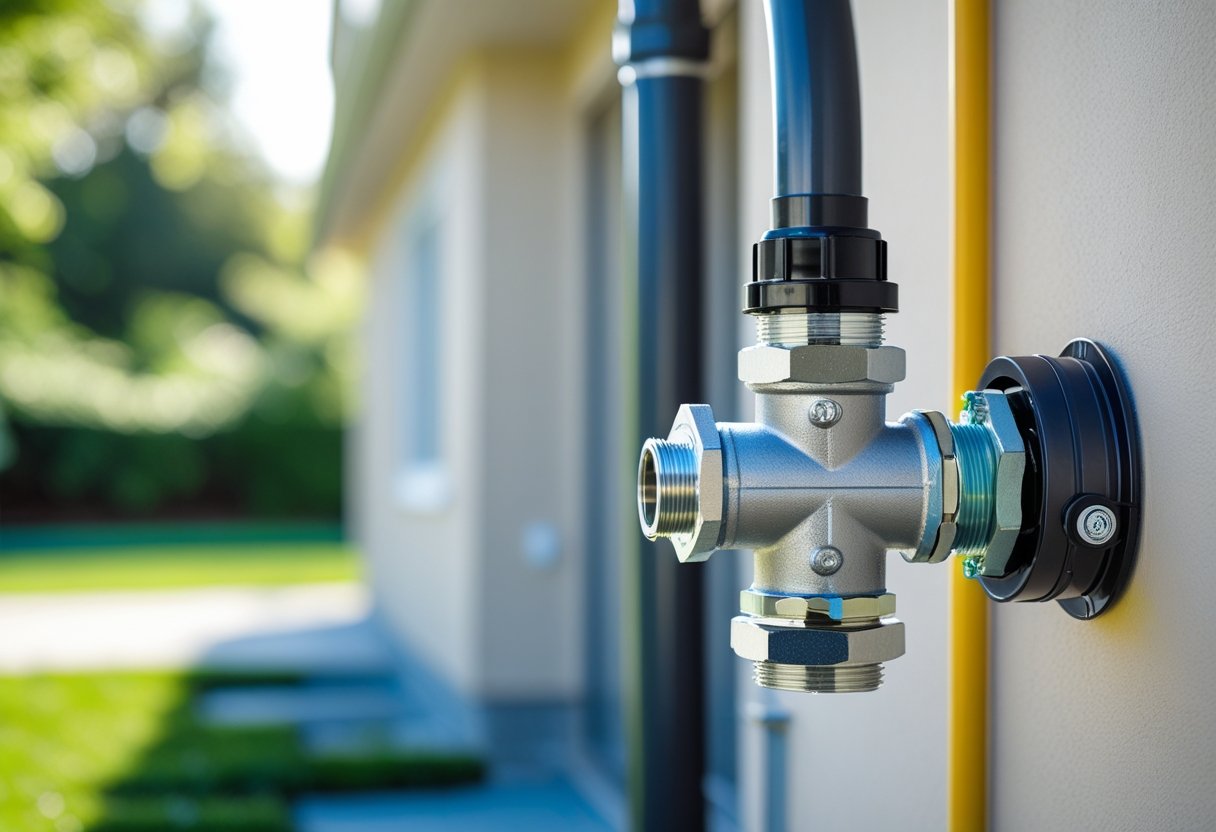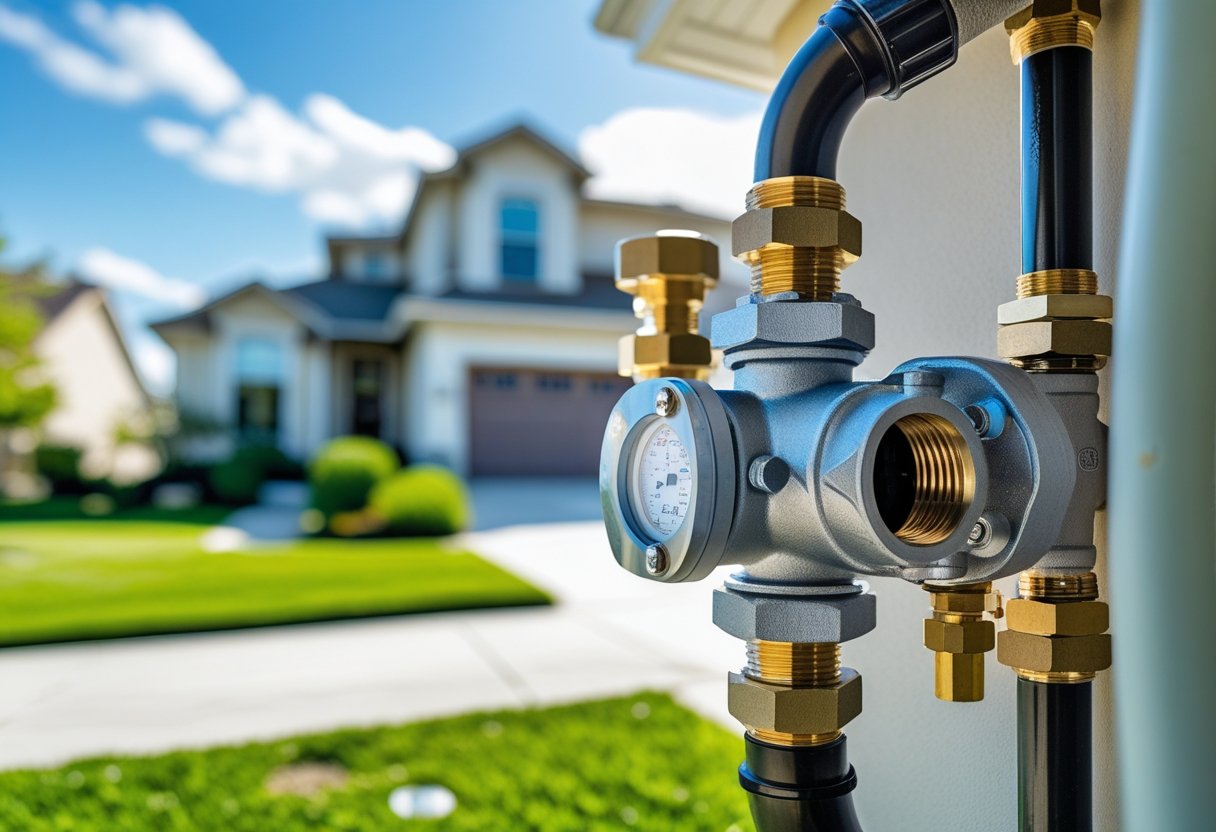Preventing water backflow in your home is crucial for maintaining a safe and clean water supply. Implementing backflow prevention devices, such as testing and installing new backflow preventers, can safeguard your drinking water from contamination. Homeowners need to be aware of the importance of backflow prevention to protect not only their plumbing systems but also their family's health.
Regular maintenance and testing of your backflow system can help identify potential issues before they escalate. By working with experts like Pacific Backflow, you can ensure that your backflow preventers function correctly and comply with local regulations. This proactive approach minimizes the risk of backflow emergencies and maintains the integrity of your water supply.
Understanding how to prevent backflow in your home will empower you to take the necessary actions for protection. Armed with the right information and support from Pacific Backflow, you're one step closer to ensuring the safety of your drinking water.
Understanding Water Backflow in Homes
Water backflow can pose significant risks to your home's water quality. It occurs when water flows in the reverse direction, leading to contamination. Understanding how it happens, the associated risks, and the types of water sources involved is crucial to safeguarding your potable water.
How Backflow Occurs
Backflow typically occurs due to a change in pressure within the plumbing system. Common causes include water main breaks, heavy water usage, or a malfunctioning backflow preventer. When these pressure changes happen, non-potable water can inadvertently flow into your home's clean water supply.
This reverse flow can create a situation where contaminants such as sediments, chemicals, or bacteria get introduced into your drinking water. It is essential to regularly test your backflow preventers to ensure they function correctly and to prevent these incidents from occurring.
Risks of Contaminated Water
The health risks associated with contaminated water cannot be overstated. When backflow occurs, your potable water supply can become tainted with harmful pollutants. This contamination can lead to serious health issues, including gastrointestinal illnesses and other diseases.
Moreover, relying on contaminated water can damage your plumbing system, leading to costly repairs. Ensuring water safety is essential not only for personal health but also for maintaining the integrity of your home's plumbing. Regular backflow testing and maintenance is critical to avoid these risks.
Types of Water Sources Involved
Backflow can involve various water sources, each with unique contamination risks. Potable water is the primary concern, as it supplies drinking water to your home. Conversely, non-potable water sources include irrigation systems, pools, and industrial wastewater, which can introduce harmful substances.
Understanding the potential for backflow from these sources is essential for prevention. Installing appropriate backflow preventers can mitigate these risks effectively. It is advisable to consult with professionals for the installation and maintenance of these systems.
If you need assistance with backflow prevention, Pacific Backflow serves all of San Diego County, providing reliable testing and installation services to protect your water supply.
Key Causes of Backflow
Understanding the key causes of backflow is crucial to protect your water supply. Significant factors include back pressure, back siphonage events, and common cross-connection hazards. Each of these can lead to potential contamination in your system, impacting not only your home but also community water safety.
Back Pressure Explained
Back pressure occurs when the pressure in a plumbing system exceeds the water supply pressure. This can happen during elevated water usage in your home, such as when multiple fixtures are in use simultaneously.
If you have appliances installed at a higher elevation than the supply line, back pressure can force water back into the main supply. Common contributors include:
- Elevated water tanks
- Hydraulic lifts
- Ineffective backflow prevention devices
Implementing a reliable backflow preventer can mitigate these risks. Regular inspections by companies like Pacific Backflow help ensure your systems operate correctly and safely.
Back Siphonage Events
Back siphonage involves a drop in water pressure in the supply line, drawing potentially contaminated water back into the clean supply. This can occur from:
- Water main breaks
- Heavy usage from nearby connections
- Fires that use large amounts of water
Even minor pressure fluctuations can create a vacuum that pulls water in the wrong direction. Maintaining proper plumbing practices and installing adequate backflow devices can reduce this risk significantly.
Common Cross-Connection Hazards
Cross-connections are points in your plumbing where potable water meets non-potable water. These connections can pose serious contamination risks if not properly managed. For example, the following scenarios can lead to backflow:
- Garden hoses submerged in contaminated water
- Improperly installed irrigation systems
- Connections to septic systems
It is crucial to regularly inspect these areas and implement safeguards. Engaging professional services like Pacific Backflow can help you identify and rectify these hazards, ensuring your water supply remains safe and clean.
Essential Backflow Prevention Devices
To protect your home from backflow, it's important to understand the various devices available, each suited for specific applications. These devices help ensure that your potable water supply remains uncontaminated and compliant with local standards.
Check Valves and Double Check Valves
Check valves are one-way devices that permit water to flow in only one direction. They are commonly used in plumbing systems to prevent backflow caused by changes in pressure. A double check valve consists of two check valves in series, providing redundancy. This is particularly useful in situations where potential contamination risks are higher, such as irrigation systems or fire sprinkler lines.
Installing these valves can significantly reduce the chance of backflow into your home's water supply. Regular maintenance of these devices is essential for optimal functionality. At Pacific Backflow, we provide annual testing and repairs for these valves to ensure they operate correctly, helping to maintain the integrity of your water supply.
Air Gaps and Vacuum Breakers
Air gaps provide a simple yet effective method of backflow prevention. An air gap is the physical separation between the end of a water supply outlet and the flood level of a fixture. This makes it impossible for backflow to occur, as water cannot siphon back into the supply line.
Vacuum breakers, on the other hand, are installed on faucets or hose bibs to prevent siphoning effects. They activate when a negative pressure occurs, allowing air to enter the system and breaking any potential siphon. Both of these methods are straightforward solutions for homeowners looking to maintain a safe water supply.
Reduced Pressure Zone Assemblies
Reduced pressure zone (RPZ) assemblies are advanced backflow preventers designed for high-risk situations. They consist of two check valves, a pressure relief valve, and a monitoring gauge. This setup ensures that any backflow is effectively contained, particularly in commercial and industrial settings where contamination risk is significant.
RPZ assemblies are essential when your water supply type requires stringent safety measures. They are especially beneficial in areas with a history of water contamination. Proper installation and maintenance are crucial, and Pacific Backflow specializes in the installation and testing of RPZ assemblies to ensure your system meets all local requirements.
Best Practices for Preventing Water Backflow
To effectively prevent water backflow in your home, it’s essential to implement a combination of inspections, professional services, and routine maintenance. These strategies will safeguard your plumbing system, keeping your water supply clean and safe.
Plumbing System Inspections
Regular plumbing system inspections are critical to identifying potential backflow issues. You should check for worn-out pipes, faulty fixtures, or any signs of leaks that could disrupt your system's pressure balance.
Look for signs like irregular water flow or unexpected pressure changes. These indicators can point to risks that could cause backflow. Have a detailed inspection performed by a qualified professional, such as Pacific Backflow, who can detect issues early and recommend necessary repairs.
Make inspections a routine part of your home maintenance schedule. This proactive approach can save you from costly repairs and health risks associated with contaminated water.
Hiring Qualified Plumbers
Always choose qualified plumbers for any work related to backflow prevention. Expert plumbers possess the knowledge and skills to handle installation, repairs, and maintenance of backflow preventers.
Ensure the plumber you hire is familiar with your local regulations. Compliance with these rules is essential to ensure the effectiveness of your backflow prevention systems. Pacific Backflow has nearly half a century of experience in maintaining water safety, emphasizing the importance of hiring reputable professionals.
Don’t hesitate to ask for credentials and references. This step will help assure you that you are choosing an experienced and trustworthy technician to protect your water supply.
Routine Testing and Maintenance
Routine testing and maintenance of your backflow preventers are necessary to ensure they function properly. Schedule annual backflow testing, as this provides critical information about the effectiveness of your prevention systems.
Use certified technicians for these tests, as they will report compliance status to the local authorities. This compliance protects not only your water supply but also your neighborhood.
In case you discover any malfunctions during testing, immediate repairs should be initiated. This quick response ensures that your system remains effective. Pacific Backflow provides hassle-free testing and comprehensive maintenance services tailored to your needs.
Make these practices a fundamental aspect of your home care routine. They are essential for maintaining safe drinking water and ensuring your plumbing system operates efficiently.
Protecting Water Quality and Home Safety
Maintaining safe water quality is vital for the health of your home and family. Understanding the contaminants that can affect your water and the regulations governing backflow prevention can guide you in ensuring safety and compliance.
Common Chemical and Bacterial Contaminants
Contaminants such as pesticides, fertilizers, and heavy metals can seep into the water supply. Additionally, bacteria like E. coli and Legionella pose serious health risks. These contaminants can enter your water system through backflow, especially during events like heavy rainfall or burst pipes. Installing a reliable backflow preventer is essential in stopping pollutants from compromising your drinking water.
You should also regularly test your water for these contaminants. At Pacific Backflow, we can help ensure that your home remains free from harmful substances and that all equipment is functioning effectively.
Regulatory Requirements and Compliance
Local regulations mandate that homeowners implement specific backflow prevention measures. Compliance ensures not only your safety but also the protection of the community's water supply. Most municipalities require annual testing of backflow preventers to prevent contamination.
Familiarize yourself with your area's regulations and schedule regular inspections. Our certified technicians at Pacific Backflow can assist you with compliance and provide fast testing to ensure your system meets local requirements.
Proactive Measures for Homeowners
As a homeowner, taking proactive measures is key to protecting your water quality. Start by installing a backflow preventer tailored to your system's needs. Regular maintenance and annual testing can catch potential issues early.
Additionally, consider incorporating protective measures, such as securing your backflow device against tampering or theft. Our team offers various services to install and maintain backflow preventers, ensuring your system remains compliant and operational. Making these investments in your home is crucial for long-term safety and quality of water.
Frequently Asked Questions
Many homeowners have questions about backflow prevention systems, their installation, maintenance, and legal obligations. Understanding these key aspects can help you ensure the safety and quality of your water supply.
How can I install a backflow preventer in my home plumbing system?
To install a backflow preventer, first, identify the location in your plumbing system that requires protection. Typically, this is near the water meter or where your main line enters the house. Ensure that the installation complies with local codes, and consider hiring a professional, like those at Pacific Backflow, for proper installation and to avoid issues later.
What types of backflow prevention devices are suitable for residential use?
Common types of backflow prevention devices for residential use include reduced pressure zone (RPZ) devices, double check valves, and atmospheric vacuum breakers. Each type serves different purposes and has specific applications, so it’s essential to choose the one that fits your plumbing needs best.
What maintenance is required for a household backflow preventer?
Regular maintenance for a household backflow preventer includes annual testing, visual inspections, and cleaning of any debris. It's crucial to follow up on repairs promptly if any issues arise. Companies like Pacific Backflow offer testing and maintenance services to help ensure your system operates effectively.
Where should a backflow prevention device be placed in a home plumbing system?
A backflow prevention device should be installed as close to the water entry point as possible, often near the main valve or water meter. This placement maximizes its effectiveness in preventing backflow and protecting your home's water supply.
Are there any legal requirements for backflow prevention in residential properties?
Yes, many jurisdictions have regulations requiring backflow prevention devices for homes to protect the public water supply. It’s important to check local codes and ordinances to ensure compliance. Engaging with local plumbing professionals can provide clarity on your specific obligations.
How do you test a backflow preventer to ensure it is functioning correctly?
Testing a backflow preventer typically involves using specialized equipment to check the device's valves and overall functionality. You should perform this test annually and after any repairs. Professionals trained in backflow prevention, such as those at Pacific Backflow, can conduct these tests efficiently and ensure your system meets compliance standards.












